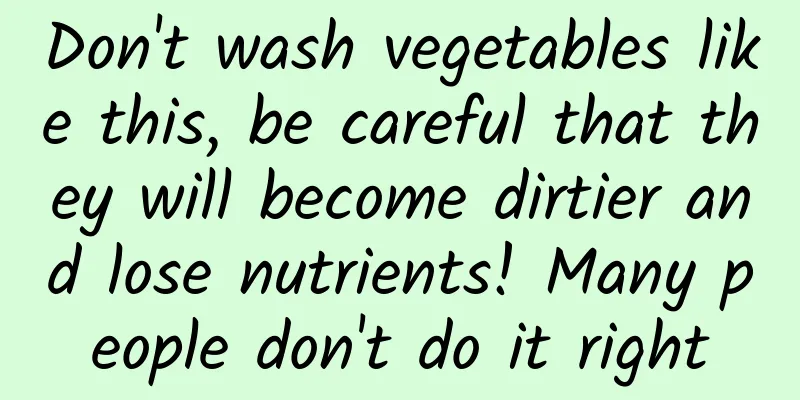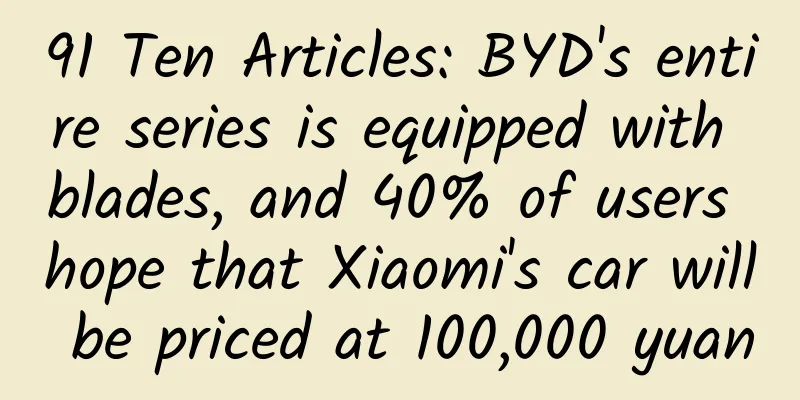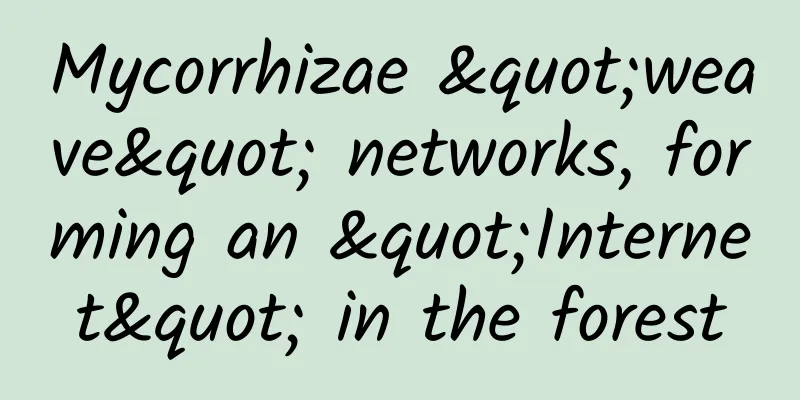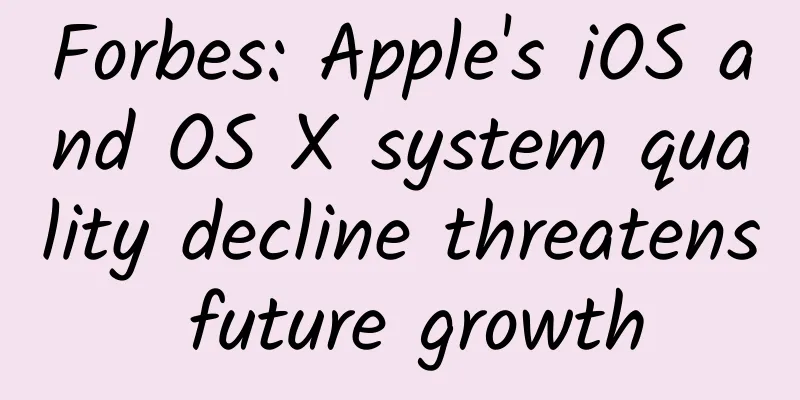Don't wash vegetables like this, be careful that they will become dirtier and lose nutrients! Many people don't do it right

|
Vegetables are an indispensable part of our daily diet, providing us with rich vitamins and minerals. Food ingredients must be cleaned before cooking to ensure that the vegetables entering the mouth are safe and nutritious. But do you really know how to wash vegetables? Some seemingly common vegetable washing habits are actually unscientific. Not only can they not effectively remove dirt, but they may also greatly reduce the nutritional value of vegetables. Have you fallen for any of the following vegetable washing methods? Copyright images in the gallery. Reprinting and using them may lead to copyright disputes. 4 Common Wrong Ways to Wash Vegetables 1. Soak vegetables for a long time Many people soak vegetables in water for a long time to remove pesticide residues or dirt. Analysis: Long-term soaking softens the cell walls of vegetables, making it easier for pesticides and other pollutants to penetrate. In addition, some water-soluble vitamins will also dissolve in water, causing nutritional losses. 2. Using too much detergent In order to better remove pesticide residues, some friends use too much detergent to wash vegetables, such as cleaning agents, fruit and vegetable cleaning agents, etc. Analysis: If the chemical components in the detergent are not cleaned thoroughly, they will remain on the surface of the vegetables, causing secondary pollution and affecting health. In addition, in some experiments, the effect of using detergent to wash vegetables is not as good as water. 3. Cut first and then wash Some people think that it will be cleaner if they wash after cutting, while others think that the countertop will not be wet if they wash after cutting, so they are used to this method. Analysis: Cutting vegetables before washing them will increase nutrient loss and food safety risks. Many nutrients in vegetables, such as vitamin C and folic acid, are water-soluble. If they are cut before washing, these nutrients are easily lost from the cut and dissolved in water. When vegetables are cut and then washed, pesticide residues or dirt on the cut surface may be difficult to clean thoroughly, and the cut surface of the vegetables will be exposed to the air, increasing the risk of contamination by bacteria, dust, pesticide residues, etc. 4. Vegetable washing machine Vegetable washing machines have become a popular vegetable washing product in recent years. Some products claim to use ultrasound for cleaning, while others use ozone decomposition. Many businesses also advertise that vegetable washing machines can efficiently remove pesticide residues without causing new pollution. Analysis: Research data shows that the effect of ultrasonic cleaning of leafy vegetables is not ideal, with a pesticide removal rate of only 53%, which is inefficient. In addition, the properties of different pesticide residues vary greatly, and a single method cannot remove all types of pesticide residues. The pesticides used in the pesticide removal experiments advertised by merchants are not necessarily the same as the pesticides sprayed during actual production; on the other hand, short-term addition and long-term penetration in the natural environment are also different. In addition, if you go to regular supermarkets to buy vegetables, usually the pesticide residue content is mostly in line with relevant standards and specifications, so there is no need to panic or worry too much. Instead of spending a lot of money to buy a vegetable washing machine, it is better to learn how to properly wash various vegetables. Different types of vegetables have different edible parts, skin roughness, properties, etc., so they need to be cleaned in different ways. Let's take a look at how to properly clean different types of vegetables. Copyright images in the gallery. Reprinting and using them may lead to copyright disputes. How to wash different vegetables 1. What exactly are you washing when you wash vegetables? The most basic cleaning is to wash away the mud, dust, fertilizer, attached foreign matter, microorganisms, etc. during the planting, picking and transportation process. In addition to these "dirty" things visible to the naked eye, an important goal of washing vegetables is to reduce pesticide residues. 2. Which vegetables have the most pesticide residues? The 2023 Produce Shopper's Guide to Pesticides released by the Environmental Working Group (EWG) shows that in the United States, approximately 75% of vegetables (non-organic) contain potential pesticide residues. The EWG report pointed out that more than 90% of spinach was detected with more than two types of pesticide residues; kale and mustard greens, peppers and sweet peppers had the most types of pesticides detected among all vegetables, at 103 and 101 respectively. This is the situation in the United States, but what about the situation of pesticide residues in vegetables in our country? According to the query system for food safety random inspection results released by the State Administration for Market Regulation, the random inspection results of various vegetables from 2014 to date show that the foods with higher pesticide residue rates are: In general, beans are more likely to have pesticide residues, so you need to be especially careful when washing them. Mushrooms, on the other hand, are less likely to have pesticide residues, so you can eat them without worry. 3. How to wash different vegetables? Contestant 1: Leafy Greens Representative ingredients: spinach, rapeseed, lettuce Leafy vegetables are vegetables with a relatively large consumption and rich nutrition. Since they cannot be peeled and have a large leaf surface area, the risk of pesticide residues is relatively high. Some researchers compared the effects of different cleaning methods for leafy vegetables. Based on the removal rate of pesticide residues of different leafy vegetables, washing with running water (77.0±18.0%) is the most effective means of removing pesticide residues. Detergents (43.7±14.5%) have the lowest reduction in pesticide residues and the worst effect. Finally, the conclusion is: the best way to wash green leafy vegetables is to rinse them with running water. Image from: Effectiveness of Different Washing Strategies on Pesticide Residue Removal: The First Comparative Study on Leafy Vegetables When washing leafy vegetables, tap water is sufficient. No need to add vinegar, lemon juice, detergent or special fruit and vegetable cleaning agents. In terms of removing pesticide residues, clean water is the best. Also, don't soak them in water for too long, as bacteria can spread from leaf to leaf. If you soak them in the sink, bacteria from the sink can contaminate the vegetables. Before cleaning, you need to remove the yellow and withered leaves, break the leaves apart with your hands, and let the running water flush to the bottom. Of course, if the roots are difficult to break apart, you can also cut off the roots first, shake them in water to clean them, and then rinse them with running water. Copyright images in the gallery. Reprinting and using them may lead to copyright disputes. Contestant 2: Curly Leaf Vegetables Representative ingredients: lettuce, cabbage The common feature of this type of vegetables is that the outer leaves wrap the heart layer by layer. Because the outer layer is prone to insects, pesticide residues, stains and dust, it is also the most likely part to remain, so when handling, the loosest leaves on the outside should be removed. If there is damage, you need to remove a few more leaves. Next, pick off the outermost 2 to 4 leaves of the entire plant and inspect them to see if there are any insects or eggs, especially in the crevices and folds. ●If there are no insects, just pick off the remaining leaves one by one and wash them; ●If there are 1~2 bugs, you need to remove the leaves on the bottom layer and check carefully to see if there are any bugs. If there are none, you can wash it normally. ●If there are more than 3 bugs, each piece needs to be carefully checked and cleaned. Contestant No. 3: Cucurbits, tomatoes and rhizomes with rough skin Representative ingredients: pumpkin, cucumber, carrot, potato The characteristics of this type of vegetables are that the surface is not smooth, some have more dirt, and are not easy to be washed. The Hong Kong Food Safety Center recommends washing with running water. If appropriate, you can use a special vegetable cleaning brush to scrub vegetables with hard surfaces to remove dirt and other substances (including pesticides and pollutants) on the surface and in the crevices. If the vegetables are damaged or bruised, cut those off before washing them. You can also consider peeling them if you are concerned that they are not washed thoroughly. Some people may think that since they have to peel the vegetables anyway, they can skip the cleaning step. In fact, this practice can easily introduce dirt and pesticide residues on the skin to the surface of the peeled vegetables, increasing the risk of contamination. Copyright images in the gallery. Reprinting and using them may lead to copyright disputes. Contestant No. 4: Vegetables with high pesticide residue and high hardness Representative ingredients: cowpea, celery For vegetables such as cowpeas and celery that are often on the blacklist of random inspections, you can simply soak them before washing to remove some of the water-soluble pesticide residues. The soaking time should be controlled within 5 to 10 minutes. If the time is too long, it may seep back into the vegetables. After soaking, rinse with clean water for 30 seconds, rubbing gently with your hands while rinsing. After washing, blanch them quickly because heating can help decompose organophosphorus pesticides. For vegetables with high pesticide residues, 80% to 90% of the residual pesticides can be washed away. Contestant No. 5: Cauliflower, which has a complex structure and is difficult to clean Representative ingredients: broccoli, cauliflower This type of vegetable is made up of many small flowers, and each flower has many small particles on the surface, which is uneven. There are many small gaps in the food, which may hide insects, insect eggs and pesticide residues. Each "flower" is relatively tight. The surface is highly hydrophobic, difficult to clean, and easy to accumulate pesticide residues. Bugs often crowd between the tightly packed florets, making them difficult to inspect for bugs because the florets are so tightly packed. To clean these vegetables, it is best to soak, wash, and blanch them: 1. Soak ● Carefully inspect the outside of the vegetable. Remove all the florets from the head and cut in half vertically. ●Put all the half flowers into a basin filled with warm water and let them soak for 20 minutes. 2. Cleaning 3. Quick blanching Things to note when washing vegetables In addition to mastering the correct method of washing vegetables, if you don't pay attention to these small details, the results may be counterproductive. 1. Wash your hands before washing vegetables: Before and after handling food, including before washing vegetables, you must wash your hands first to ensure that your hands are clean and avoid transferring bacteria from your hands to the food. When washing your hands, you should use running water, hand sanitizer or soap, and scrub carefully for at least 20 seconds to ensure that your hands are thoroughly clean. 2. Wash thoroughly: When washing vegetables, make sure to clean the dirt, grime and pesticide residues on the surface of the vegetables. For leafy vegetables, you can first remove the outer leaves and then wash them one by one. For root vegetables, you can first scrub the surface with a brush and then peel them. 3. Use running water for washing: When washing vegetables, it is best to use running water for washing rather than using still water. This ensures that the dirt and pesticide residues on the surface of the vegetables are washed away instead of being reattached to the vegetables. 4. Wash by category: Different types of vegetables should be washed separately to avoid cross contamination. For example, leafy vegetables such as lettuce and spinach should be washed separately from root vegetables, melons and fruits. At the same time, cut vegetables and uncut vegetables should also be washed separately. 5. Pay attention to the order of washing: When processing multiple vegetables, it is recommended to wash the cleaner vegetables first, and then wash the vegetables with more dirt, to avoid bringing dirt to the already washed vegetables. 6. Control the washing time: Although the washing time should be sufficient to ensure the cleanliness of the vegetables, soaking for too long may also cause the loss of nutrients in the vegetables. Therefore, when washing, the washing time should be controlled to ensure the cleanliness of the vegetables and retain their nutrients as much as possible. 7. Use appropriate cleaning tools: For different vegetables, different cleaning tools can be used to improve cleaning efficiency. For example, use a brush to clean the surface of root vegetables, use a clean cloth or paper towel to wipe the surface of melons and fruits, etc. Copyright images in the gallery. Reprinting and using them may lead to copyright disputes. Summarize: Most vegetables can be washed with running water and gently scrubbed to achieve a better cleaning effect. Some vegetables with rough skin can be cleaned with a soft brush or peeled. Vegetables with a high probability of pesticide residues and are relatively hard can be quickly blanched after washing to remove them. In short, there is no consensus on the effectiveness of adding baking soda, vinegar or flour to water, and detergents and vegetable washing machines have not been widely recognized. The most rustic and simple way is effective and environmentally friendly. References [1] Tu Huikang. Cooking and Vitamins[J]. Journal of Guangdong University of Business Studies, 1988(01):65-76. [2]EWG.EWG's2023Shopper'sGuidetoPesticidesinProduce [3] State Administration for Market Regulation Food Safety Sampling Inspection Results Query System. Celery, cowpea, leek, etc. [4] Centre for Food Safety, Hong Kong. Pesticide Residues in Fruits and Vegetables (Part II): Review of Recommendations on Washing Fruits and Vegetables [5]FDA.7Tips for CleaningFruits,Vegetables [6]YangSJ,MunS,KimHJ,HanSJ,KimDW,ChoBS,KimAG,ParkDW.EffectivenessofDifferentWashingStrategiesonPesticideResidueRemoval:TheF irstComparativeStudyonLeafyVegetables.Foods.2022Sep19;11(18):2916.doi:10.3390/foods11182916.PMID:36141043;PMCID:PMC9498324. Author: Li Chun, National Registered Nutritionist Reviewer: Ruan Guangfeng, Director of Science and Technology Department, Kexin Food and Nutrition Information Exchange Center |
<<: As we advance deeper into space, what should we do if we encounter a fire?
Recommend
Look! China's most magnificent animal wonders
This is the most magnificent animal wonder in nat...
The new mobile app rankings for 2020 are released
The number of mobile Internet users this month re...
Feelings can’t fill your stomach. How difficult is it to make a good independent game in China?
In recent years, more and more independent games ...
I told you to send the computer desk too late. Wanda established e-commerce
The full text of the report delivered by Wang Jian...
Real Physics Terms: From the Big Bang to Black Holes
In scientific research, every time scientists dis...
What technologies will Toyota popularize in the next few years?
Five years ago, the automotive industry was discu...
Pointing out Douban, where did they go wrong?
I haven't been to Douban for a long time. It ...
About 60% of netizens are unwilling to pay for iPhone 12, but Apple's official website is overwhelmed by the rush? The truth behind the "really good" is...
This weekend, domestic netizens once again experi...
Tips and tricks for using JavaScript in Swift
The author of this article, Nate Cook, is an inde...
56 Ad Monetization Terms You Must Know in 2020
According to a report from Aurora, the total onli...
Xiaomi Youpin product analysis!
Against the backdrop of industrial Internet, ther...
Why can your activities attract fans but fail to retain them?
The purpose of organizing activities is not to co...
I just found out! These 5 foods cannot be eaten on an empty stomach, and it will hurt more than just your stomach
When it comes to what you can't eat on an emp...
Do you have a special liking for poultry? Be careful of "parrot fever" knocking on your door! Here are some tips on how to prevent it~
Experts from Yiyang Central Hospital remind peopl...









